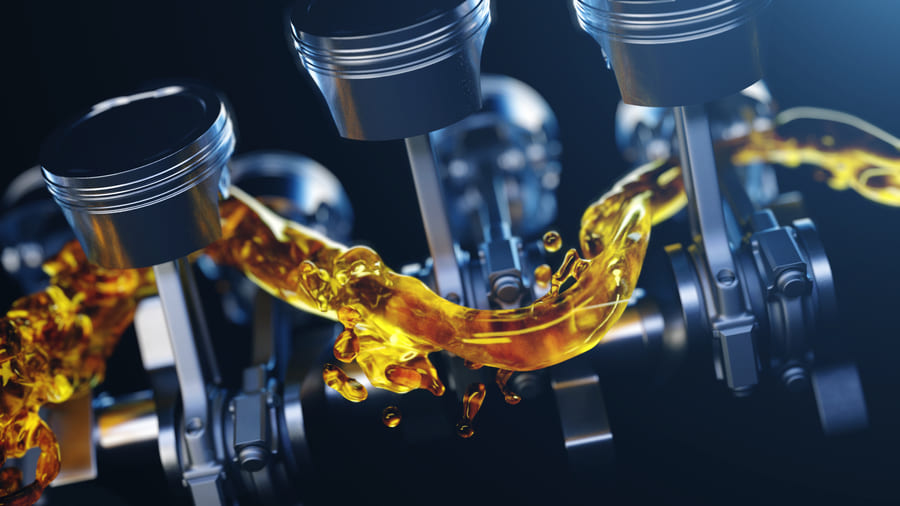How Does an Engine’s Lubrication System Operate?
strong>Engine’s Lubrication System
An engine’s lubrication system is vital for its performance and longevity, ensuring that all moving parts are adequately lubricated to reduce friction, prevent wear, and dissipate heat. This intricate system is a marvel of engineering, working seamlessly to keep the engine running smoothly. Let’s delve into the components, operation, and types of lubrication systems to understand how they function.
Components of a Lubrication System
Oil Pan (Sump): The oil pan is situated at the engine’s base, serving as the reservoir for engine oil. It collects and stores the oil when the engine is not running.
Oil Pump: The heart of the lubrication system, the oil pump, is responsible for circulating oil throughout the engine. It draws oil from the oil pan and pushes it through the filter and into the oil passages. The pump can be driven by the crankshaft or camshaft.
Oil Filter: The oil filter plays a crucial role in maintaining the cleanliness of the engine oil. It removes contaminants such as dirt, metal particles, and other debris before the oil reaches the engine components.
Oil Passages (Galleries): These are a network of channels within the engine block and cylinder head. They direct the flow of oil to various critical engine parts, ensuring even distribution.
Pressure Relief Valve: This valve regulates the oil pressure, maintaining it within a specified range. If the pressure exceeds the limit, the valve opens to allow some oil back to the oil pan, preventing damage to the engine components.
Oil Cooler: In some high-performance engines, an oil cooler is used to lower the oil temperature, maintaining its viscosity and lubricating properties even under extreme conditions. 
Operation of the Lubrication System
Oil Collection: When the engine is off, the oil settles in the oil pan. Upon starting the engine, the lubrication process begins.
Oil Pump Activation: As the engine starts, the oil pump draws oil from the oil pan through a pickup tube. The oil is then pressurized and pushed through the oil filter.
Oil Filtration: The oil passes through the filter, where contaminants are removed. Clean oil is essential for preventing damage to the engine’s internal components.
Oil Distribution: After filtration, the oil is directed through the oil passages to various engine parts:
Crankshaft and Bearings: Oil lubricates the crankshaft and its bearings, reducing friction and wear.
Camshaft and Bearings: The camshaft and its bearings receive oil to ensure smooth operation.
Pistons and Cylinders: Oil is sprayed onto the cylinder walls to lubricate the movement of the pistons.
Valve Train: The valve lifters, pushrods, rocker arms, and valve stems are lubricated to ensure proper operation.
Heat Dissipation: As oil circulates, it absorbs heat from the moving parts, helping to dissipate it. This is crucial for maintaining an optimal operating temperature and preventing overheating.
Oil Return: After circulating through the engine, the oil returns to the oil pan by gravity, ready to be recirculated by the oil pump.
Types of Lubrication Systems
Wet Sump System: This is the most common type of lubrication system. The oil pan is located at the bottom of the engine, and the oil pump draws oil directly from it. This system is simple, reliable, and adequate for most vehicles.
Dry Sump System: Used in high-performance or racing engines, a dry sump system has a separate oil reservoir. The oil is scavenged from the engine and pumped to the reservoir before being circulated back to the engine. This system prevents oil starvation during extreme driving conditions and allows for a lower engine placement, improving the vehicle’s center of gravity.
Maintenance of the Lubrication System
Regular maintenance of the lubrication system is crucial for engine health. This includes:
Regular Oil Changes: Changing the oil at recommended intervals ensures it retains its lubricating properties and remains free of contaminants. Fresh oil provides better protection and performance.
Oil Filter Replacement: The oil filter should be replaced with every oil change to maintain oil cleanliness. A clogged filter can reduce oil flow and pressure, leading to inadequate lubrication.
Checking Oil Levels: Regularly checking the oil level ensures there is enough oil in the system. Low oil levels can cause insufficient lubrication and lead to engine damage.
Inspecting for Leaks: Regularly inspecting the engine for oil leaks can prevent major problems. Leaks can lead to low oil levels and contamination.
Conclusion
An engine’s lubrication system is a finely tuned mechanism that ensures the engine runs smoothly and efficiently. By reducing friction, preventing wear, and dissipating heat, the lubrication system plays a vital role in engine performance and longevity. Understanding how this system operates helps in appreciating the importance of regular maintenance and care. Whether it’s through regular oil changes, filter replacements, or simply checking oil levels, taking care of the lubrication system ensures that your engine remains in peak condition for years to come.
